PCR testing viable for distinguishing pathogenic APHND-competent strains
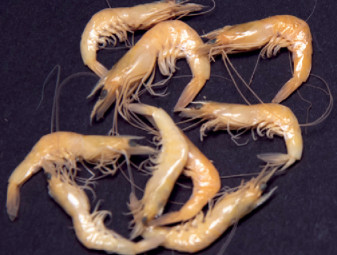
Reports have been issued over the past several years regarding the presence of acute hepatopancreatic necrosis disease (AHPND) in various countries. Today we know the AHPND-causing strains of Vibrio parahaemolyticus can occur in the anterior digestive tracks of shrimp at a cell density below the detection limit for polymerase chain reaction (PCR) tests without causing disease. For PCR detection of these subclinical carriers, modification of how shrimp are processed following collection from ponds or tanks make a difference to the detection sensitivity of the PCR test process.
PCR primers
Molecular testing by PCR has been employed since 2013 for the detection of AHPND V. parahaemolyticus. Over the past two years, improved PCR primers that specifically target DNA sequences in the genes that code for the Pir toxins were developed in the laboratories of Dr. Timothy Flegel in Thailand and Dr. Donald Lightner in Arizona, USA. Additionally, commercial PCR detection kits are readily available for AHPND diagnosis.
A study by the authors examined the utility for improved PCR detection of AHPND-competent V. parahaemolyticus in asymptomatic and otherwise healthy-appearing shrimp from ponds where disease was not apparent by permitting sampled shrimp to expire and decompose for several hours prior to ethanol preservation.
Study parameters
The study applied three PCR primers. Primer set Vpldh reacts with DNA sequences in a gene marker for lecithin-dependent hemolysin, which is specific for V. parahaemolyticus. Primer set AP4 is a nested PCR detection method with greater sensitivity that was updated from Flegel’s earlier AP3 test. AP3 detects the Pir-like ToxA and ToxB genes, as does the primer set VpPirAB reported by Han and co-authors. These genes code for the protein toxins that are the direct cause of AHPND in shrimp.
Samples of shrimp were randomly collected by cast netting in four ponds on a farm in Latin America where intermittent mortality of shrimp had been previously observed. Shrimp mortality was not observed at the time the samples were collected.
For each pond, one batch of shrimp was collected and identified as O, P, Q and R. From each batch, two groups of shrimp were sampled and tested. Group 1 (O1, P1, Q1, and R1) consisted of a larger number of individual shrimp sacrificed quickly by injection, followed by immersion in 95 percent ethanol.
Group 2 shrimp (O2, P2, Q2, and R2) were gathered and placed outside the ponds, where they were allowed to expire. The Group 2 shrimp where held at room temperature to decompose for four to five hours prior to preservation of individual shrimp by injection and immersion with 95 percent ethanol.
Two of the ponds sampled contained Pacific white shrimp (Litopenaeus vannamei) and two held black tiger shrimp (Penaeus monodon). The four ponds were stocked at different times, so the shrimp sizes varied among the ponds, although all of the shrimp were juveniles. The numbers of individual shrimp are listed by species and processing method in Table 1.
| Species | Preserved immediately | Preserved after decomposition |
|---|---|---|
| Litopenaeus vannamei | 33 | 16 |
| Penaeus monodon | 51 | 16 |
| TOTAL | 84 | 32 |
| Group | Species | Sample Count | Status at Fixation | Weight (g) | PCR Test Positives: Vpldh (%) | PCR Test Positives: AP4 (%) | PCR Test Positives: VpPirAB (%) |
|---|---|---|---|---|---|---|---|
| O1 | L. vannamei | 18 | Live | 0.3 | 16.7 | 0 | 0 |
| O2 | L. vannamei | 8 | Dead | 0.3 | 100 | 37.5 | 122.5 |
| P1 | P. monodon | 21 | Live | 1.5 | 14.3 | 0 | 0 |
| P2 | P. monodon | 8 | Dead | 1.5 | 100 | 100 | 100 |
| Q1 | P. monodon | 30 | Live | 2.0 | 16.7 | 0 | 0 |
| Q2 | P. monodon | 8 | Dead | 2.0 | 87.5 | 0 | 0 |
| R1 | L. vannamei | 15 | Live | 4.5 | 3.3 | 0 | 0 |
| R2 | L. vannamei | 8 | Dead | 4.5 | 25.0 | 0 | 0 |
Laboratory processing
At the PCR laboratory, each shrimp was processed as an individual sample. For the smaller shrimp (Groups O1-2, P1-2, Q1-2), the heads were severed from the tails, and the eyes were removed, leaving the main portions of the heads. The heads were processed further for PCR testing.
The shrimp of larger size (Groups R1-2), were individually dissected. Their stomachs and hepatopancreases were removed and processed further for PCR testing as individual samples. The DNA extracted from each shrimp was assayed with the three primer sets.
Results
As shown in Table 2, the shrimp in Group 1 (O1, P1, Q1 and R1) had been fixed live. The PCR results showed between 3.3 percent and 16.7 percent were positive by Vpldh, and none were positive by VpPirAB and AP4.
For Group 2 (O2, P2, Q2, and R2), in which shrimp were allowed to decompose before fixation, between 25 percent and 100 percent of the individual shrimp sampled positive by Vpldh. However, zero, 12.5 percent and 100 percent were positive by VpPirAB, and zero, 37.5 percent or 100 percent were positive using AP4 primers.
Interpretation
The PCR test data demonstrated a number of things. First, the Vpldh primer results indicated that non-AHPND V. parahaemolyticus was common flora in the pond environment on the farm because it was present in some of the shrimp sampled from the four ponds.
Second, in Group 1, no shrimp tested PCR positive by the VpPirAB or AP4 primer sets in the samples from the four ponds. This outcome demonstrated that shrimp sampled and sacrificed shortly after collection gave PCR test results that would be compatible with an interpretation that AHPND-competent V. parahaemolyticus was either not present in the shrimp sampled or was below the detection level for the PCR primers applied.
Third, the decomposition of Group 2 shrimp prior to ethanol preservation provided a means to increase the prevalence of shrimp that were PCR positive for the three primer sets. Moreover, decomposition improved test sensitivity for the AHPND-competent V. parahaemolyticus, as two of the four pond samples tested positive.
Fourth, in this study, the findings indicated the AP4 primer set was a bit more sensitive than the VpPirAB set for detection of AHPND-competent V. parahaemolyticus.
The simplest explanation for improved PCR test results was that decomposition provided the nutrient substrate to support bacterial multiplication. This resulted in increased biomass of the bacteria in the shrimp carcasses, which provided sufficient DNA for the PCR primers to react and provide a positive test outcome.
Recommendations
PCR testing is a viable method for distinguishing between pathogenic APHND-competent and benign strains of V. parahaemolyticus. For circumstances in which asymptomatic shrimp will be sampled and tested by PCR for the pathogenic V. parahaemolyticus, the authors recommend the removal of the stomach and hepatopancreas from each shrimp and their inoculation in suitable bacteriological media for five to 12 hours prior to sample preservation in ethanol. Optionally, following collection from the pond, shrimp should be set aside to decompose for at least five hours before the individual shrimp are injected with ethanol for fixation. These preliminary steps prior to ethanol fixation will markedly improve the sensitivity of PCR detection of AHPND-competent V. parahaemolyticus.
Authors
-
Nathene L. Antonio, B.S. and James A. Brock, DVM
Moana Technologies, LLC
99-1255 Waiua Place #4
Aiea, HI 96789
[115,117,46,97,110,111,107,97,110,97,111,109,64,109,105,106]
-
Hank Bauman
Paradise Shrimp Farm
Dangriga, Belize
Tagged With
Related Posts
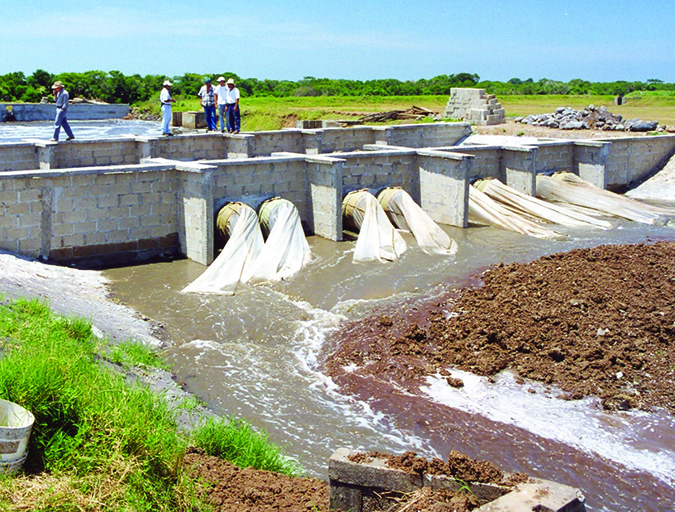
Health & Welfare
Vibrio control in shrimp farming: Part 2
Strategies to control Vibrio bacteria at aquaculture farms must revolve around limiting inputs, including those from postlarvae suppliers, those that come in with the water, those that remain in the soil between crops and those in the feed and accumulated organic matter.
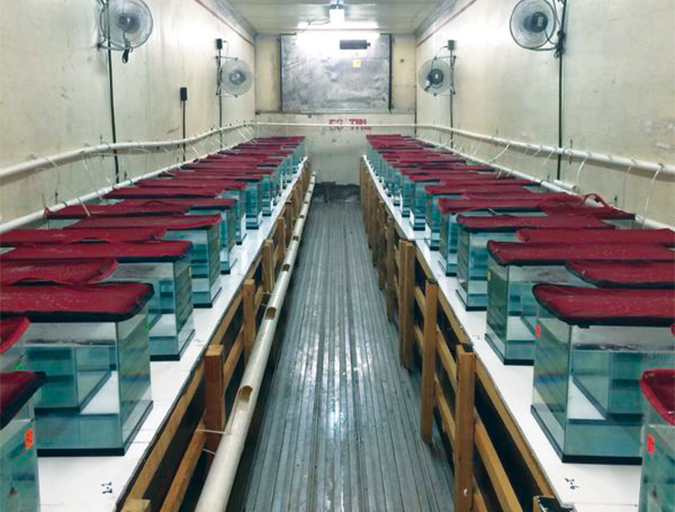
Health & Welfare
Genetic variation for resistance to WSS, AHPND in Pacific white shrimp
Selection for disease resistance has been used in breeding farm animals and can be a viable option to deal with white spot syndrome and acute hepatopancreatic necrosis disease in commercial shrimp culture. In trials, heritability for AHPND resistance was low, while that for WSS was moderate.
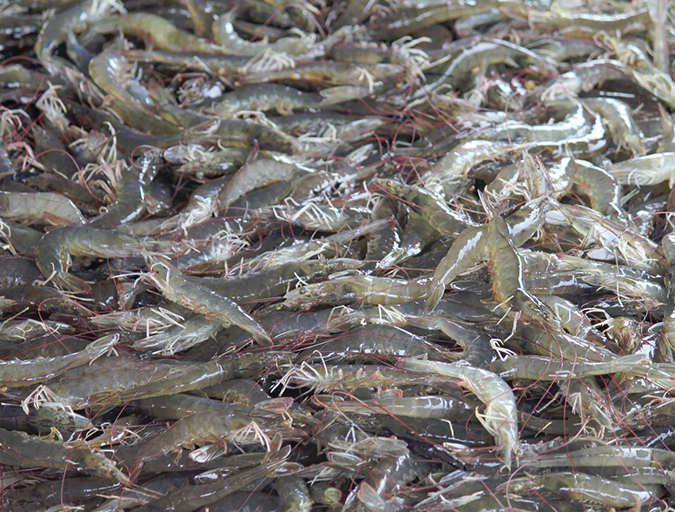
Health & Welfare
Four AHPND strains identified on Latin American shrimp farms
Two virulence genes are known to encode a binary photorhabdus insect-related toxin that causes acute hepatopancreatic necrosis disease in shrimp. The pathogenicities of these V. campbellii strains were evaluated through laboratory infection and subsequent histological examination in P. vannamei shrimp.
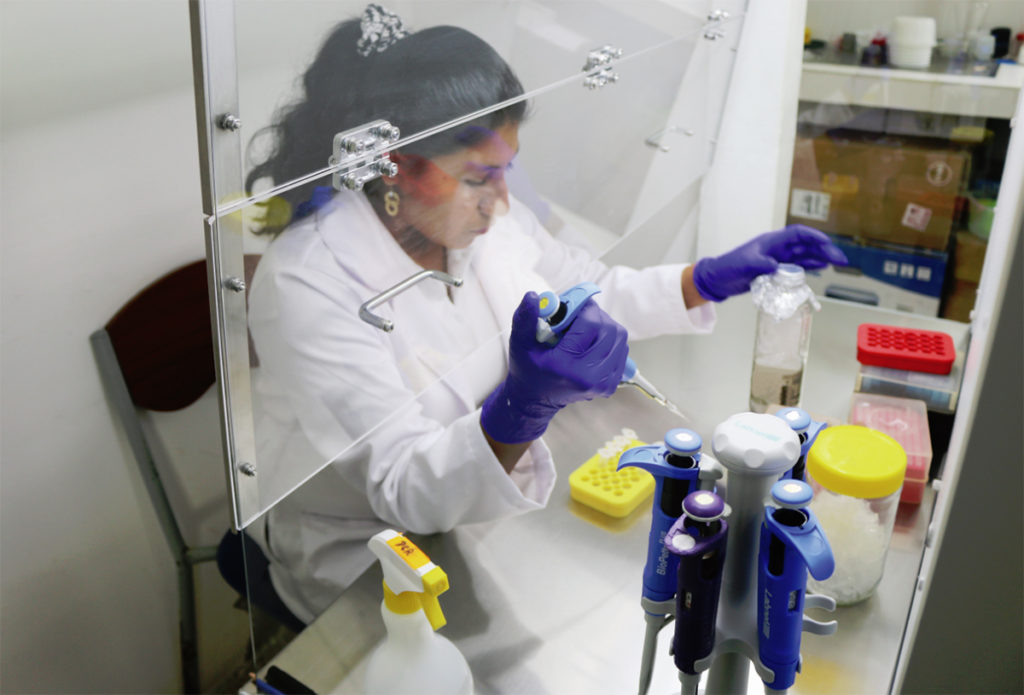
Health & Welfare
Asepsis key to prevent contamination in shrimp hatcheries
Maintaining biosecurity and asepsis in larval shrimp production is a key component of the production chain in Ecuador, which requires the production of 5.5 billion larvae monthly from 300-plus hatcheries.


